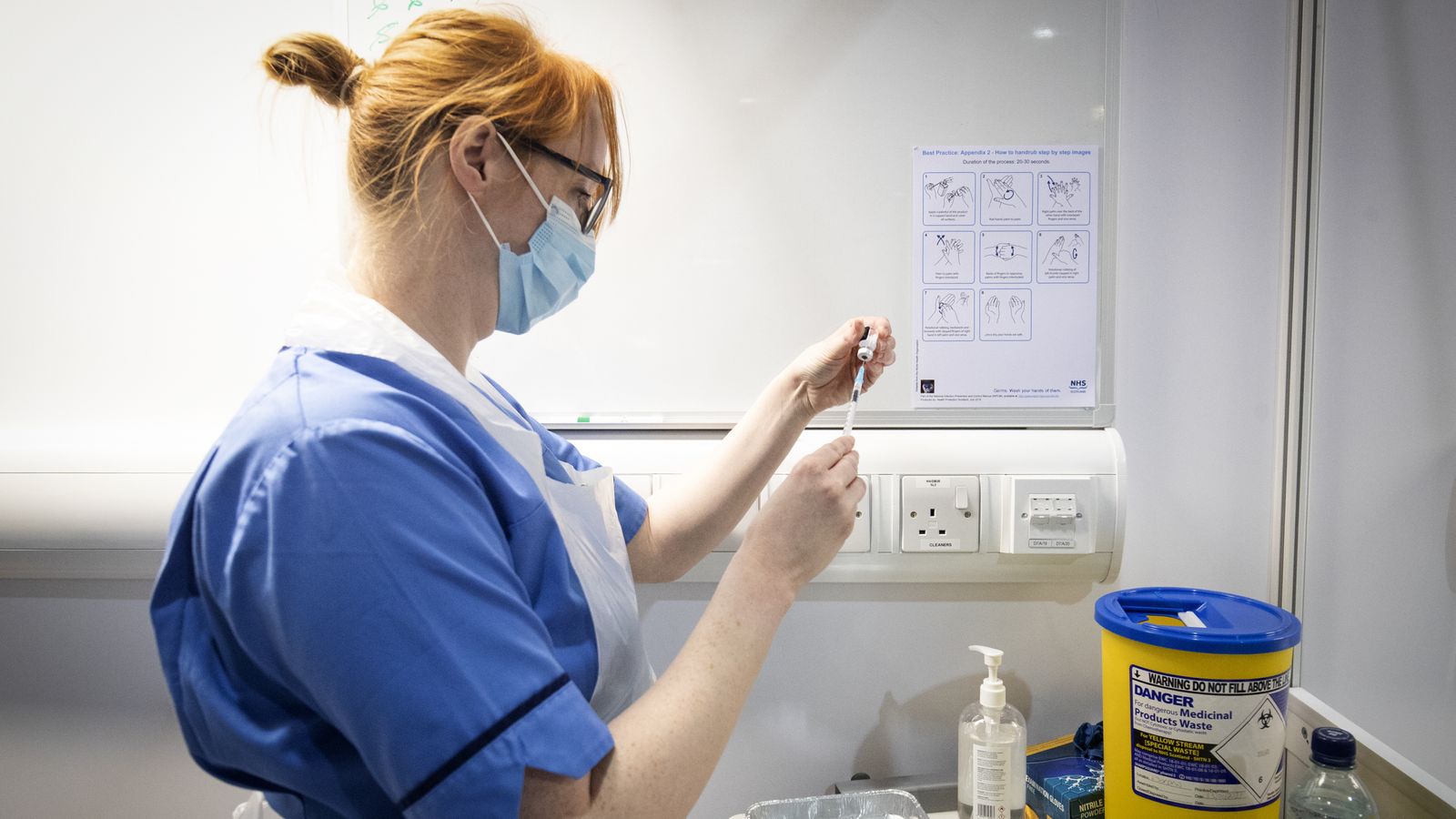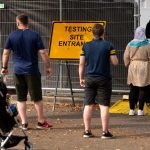Let’s begin with a statistic that might surprise you, and possibly alarm you.
Of those dying of COVID-19 in recent months, a comfortable majority – around 64% – had received at least a single dose of one of the vaccines.
It is there in black and white on Public Health England’s data tables: of the 460 people who died between February and July having tested positive for the Delta variant, 289 had been double-jabbed; some 65 had received one dose. And 165 had not been vaccinated at all.
Does this mean the vaccines aren’t doing what we expected? Not necessarily. To see why, it’s worth delving into the PHE numbers, but before doing so, keep in your mind two critical points.
The first is that the majority of UK adults have now been vaccinated. Indeed, break it down by age group and you’ll see that of those aged over 50 around 91% have been vaccinated – most of them with two jabs.
The second is that the vaccines don’t entirely reduce the risk of either catching the disease or being hospitalised or dying of it. They are not 100% effective. But they do, at least on the basis of tests from Pfizer and AstraZeneca, reduce the likelihood of both of these outcomes considerably.
But reducing something considerably is not the same as eliminating it. So, for instance, before getting vaccinated the chances of a 90-year-old catching and dying of COVID-19 were estimated to be roughly 2.8%.
After getting the jabs, the chances of the same illustrative 90-year-old catching and dying the disease are reduced to around 0.14%.
It’s a very big reduction, but that jabbed 90-year-old nonetheless faces a roughly similar risk profile as an unjabbed 60-year-old (0.12%). Same thing for an 80-year-old, whose jabbed risk profile is close to that of an unjabbed 50-year-old. And so on.
The point here is that even if the vaccines were doing exactly what we expected of them, some people, especially the elderly, are still quite likely to die of COVID-19 – especially if there’s a lot of it around.
So what does the actual real-world evidence tell us is going on? Well for this let’s refer to the PHE data on the Delta variant.
This is the same dataset that Sir Patrick Vallance was referring to when he said the other week that around 60% of those hospitalised were unvaccinated.*
It gives us data on a large number of people who tested positive for the Delta variant, and then shows us what happened to each of them next.
Here’s what we learn from it. Of the over-50s who caught Delta, around 13,700 had been vaccinated at least once; around 2,400 had not been vaccinated.
So: that’s about 85% of those catching the virus being double-jabbed, which is a little higher than one would expect, but might be a result of this data sample not covering all cases. Either way, the most important thing is what happened next.
Consider hospitalisations. Of the vaccinated people, some 3.5% were hospitalised. Of the unvaccinated people, some 8.4% were hospitalised.
In other words, the rate of hospitalisations per case was 2.4 times higher among those who were unvaccinated.
But here’s the crucial thing: because there are so many more people who are vaccinated than unvaccinated (13,700 vs 2,400 in terms of those catching Delta in this sample), the actual number of these over 50-year-olds going into hospital was higher: 487 vaccinated vs 196 unvaccinated.
Or consider deaths. Of the vaccinated people who had caught Delta, around 2% sadly died. Of the unvaccinated people who had caught delta, around 5.6% died. Deaths-per-case among the unvaccinated were almost three times higher than in the vaccinated group.
It’s worth emphasising that, as I say, while this dataset is comprehensive, it may not be representative of the population.
So I’d be wary of reading too much into the comparative ratios here, or trying to calculate an effectiveness figure from them. Even so: this is real-world data and it suggests a very strong reduction of mortality among those who have been vaccinated.
Yet because of the sheer numbers of those who are vaccinated, despite this comparative reduction in mortality, the simple total number of those dying is 279 vaccinated compared with 131 unvaccinated.
From the beginning of this pandemic it’s been very easy to take figures out of context – whether to alarm people or to delude them. This is another one of those instances where context is phenomenally important.
The vaccines are reducing the risk of hospitalisation and death from COVID-19. It is there in the data – provided you read it with a clear head.
*You might recall Sir Patrick said that around 60% of those hospitalised were double jabbed in the press conference, and then had to correct himself on Twitter afterwards. Interestingly, when you look just at the over-50s, it turns out around 54% of those admitted were indeed double-jabbed, with only 29% of those admitted having had no vaccination. Again, given the very high proportions of those in the age group who are vaccinated, this is perhaps unsurprising.






















